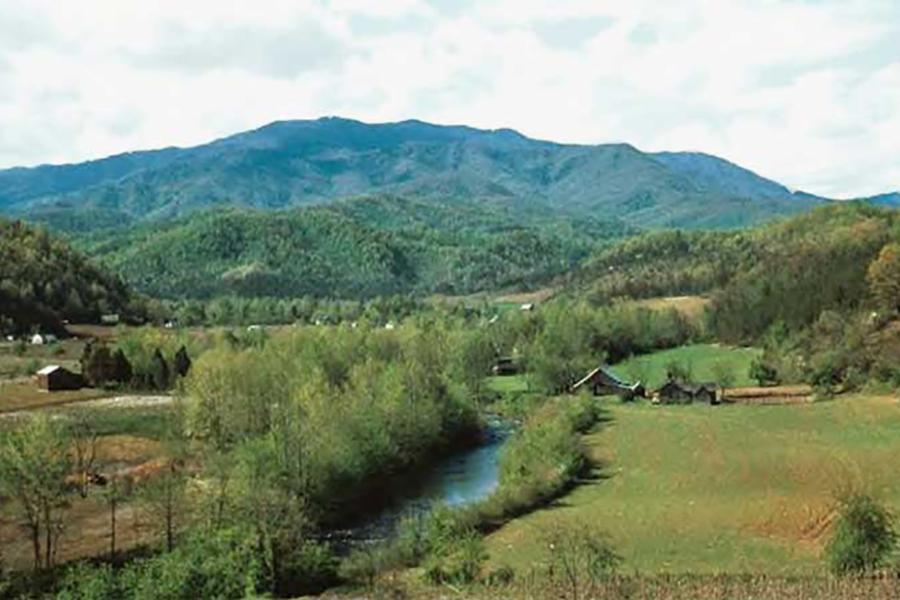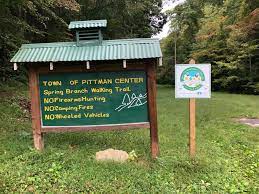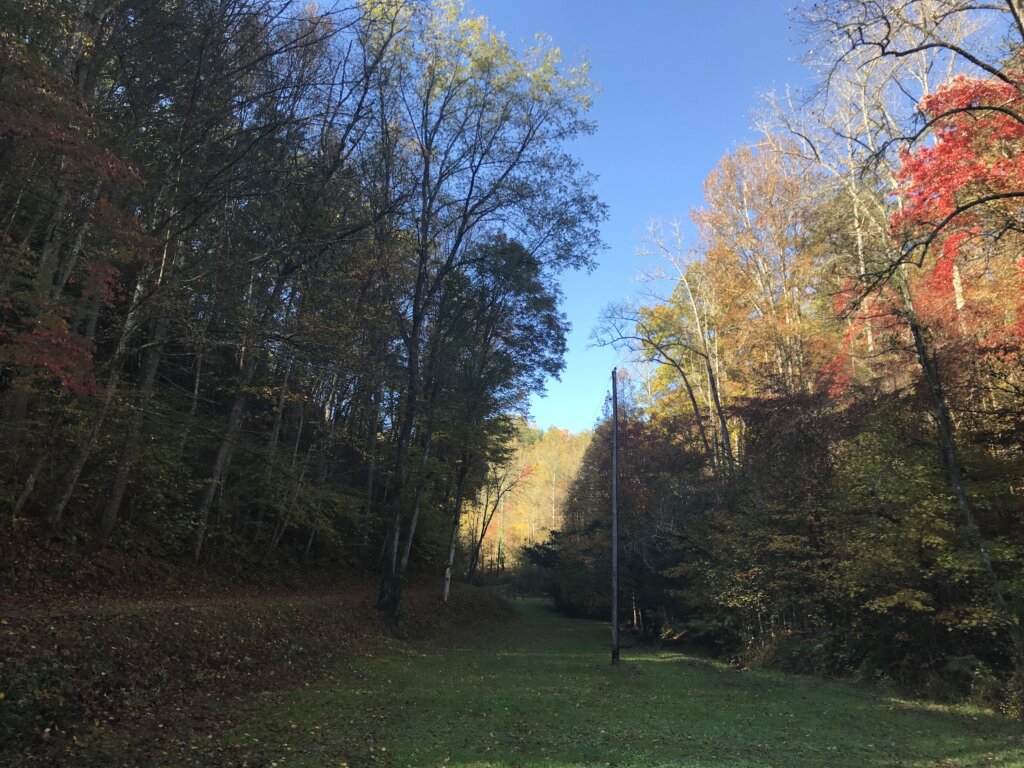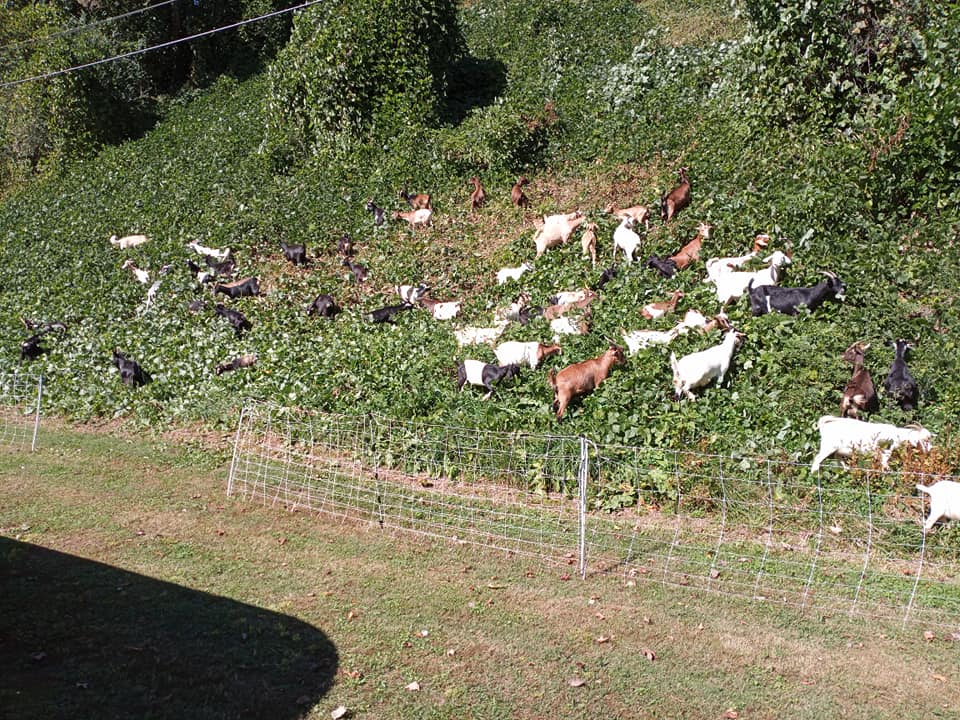Pittman Center shows small cities can employ green land management practices

By KATE COIL
TT&C Assistant Editor
With concerns rising about using pesticides and synthetic fertilizers, the town of Pittman Center is showing that even small municipalities can employ green measures in maintaining their public lands.
While on the border of the Great Smoky Mountains National Park, Pittman Center does not have its own parks and recreation department. Despite this, the town maintains the 50-acre Spring Branch Walking Trail through the work of its public works department, the Pittman Center Tree Board, and help from the Foothills Land Conservancy.

Sheila McMahan, member of the Pittman Center Tree Board, said the park was donated to the town in 2008 by a local resident to create a nature park for the community. A gift from the estate of another local resident turned what had once been farmland and a homestead site into a walking trail for the public to enjoy. The “Y” shaped walking trail features the remains of two homesites, a spring box, and chimney pile, as well as its namesake, the Spring Branch of the Little Pigeon River.
Due to periods of seasonal high water and flooding, the walking trail and the spring it followed began showing signs of erosion. Members of the Tree Board and town officials walked the land to see if they could determine what was causing the problem.
“The branch bank was eroding on the southside because the town was mowing right up to the edge,” she said. “That was putting pressure from above and keeping any foliage with strong roots that could stabilize the bank from growing. We noted where it was eroding the most and thought about what we could do to stabilize the branch. We walked with the town, and they agreed with us that a best practice would be not to mow the edge of the bank.”
McMahan said leaders decided against using methods such as pesticides and herbicides to control these weeds because of concerns over what that would mean for the local water supply.
“We need to think about the environmental effects,” she said. “It isn’t as easy as ‘let’s throw something on these weeds,’ and it’s done. You have to realize these pesticides are going into the ground and into the water. They are then killing off the insects and animals that rely on that water. The Spring Branch is a major feature of that walking trail, and any pesticide we use there is going to make it into that water. Within three feet, that water is on private land and taking those health concerns with it. You have to think of a better way, something that is long-term and good not just for our eyesight but also for the plant and animal kingdoms.”
The organic land management movement has been gaining momentum in cities across the country as more is learned about the long-term, harmful effects of synthetic fertilizers, pesticides, and herbicides, even those used in municipal parks.
Many of the common ingredients in pesticides and herbicides contain ingredients known as carcinogens by the U.S. EPA and hundreds of lawsuits have been filed against companies like Monsanto, blaming use of their herbicide and pesticide products for causing non-Hodgkin's lymphoma. The use of synthetic fertilizers, pesticides, and herbicides has also been linked to higher cancer risks and the distribution of metabolic, reproductive, immune, endocrine, and nervous system functions.
Outside human medical concerns, pesticides containing nenicitoids have been banned throughout Europe due to their contribution to the collapse of native bee populations. Leaching of pesticides and synthetic fertilizers into groundwater has also been linked to damaging local water supplies and causing algal blooms, which can harm humans, animals, and local ecology.
Additionally, work is being done to educate the public about why the town is allowing weeds and other growth along the streambank, providing a natural stabilization. This technique, known as “no mow” or “low mow,” is one technique municipalities are using both for streambed stabilization but also to encourage pollinator development.
“We are working to plant native trees along the bank, that would help stabilize it as well as help with the weeds,” McMahan said. “Some of the species we are looking at are silky dogwood, silky willow, elderberry, button bush, ninebark, oaks, magnolia, redbuds, black gum, and tulip trees. We also planted some native flowers and plants in the park and along the stream.”

Other native plants that Pittman Center officials have encouraged to grow in the area include rue anemone, Carolina vetch, pussytoes, bloodroot, violets, and various ferns and related plants that call the region home. McMahan said the Tree Board, town officials, and community members are still working toward putting in more native trees and plants as well as complete the walking trail into a entire loop.
On the opposite side of the spectrum, McMahan said the town also had issues with an invasive plant species known for how hard it is to root out: kudzu. In 2021, the town brought in goats from Knox Goats to remove kudzu in the community through a $6, 600 Firewise Grant. In addition to offering a pesticide-free solution to the problem, the goats also helped reduce wildfire risk in the area.
“We wanted to help the population of pollinators, but also reduce potential run-off of pesticides in the area as much as possible,” she said. “It’s better to work within your natural resources as much as possible.”
Bordering on the nation’s most visited national park, McMahan said it is important for Pittman Center to adopt more natural methods of maintaining their public lands and parks, not just for local residents but also the millions of visitors who come to enjoy what nature has to offer.
“The Great Smoky Mountains is vast, and the park service is slim,” she said. “Having a small area that a small government is focused on and helping those native species, it allows those species to continue to thrive. We are protecting the environmental concerns surrounding those species and on a more personal level. We can also educate the public about those native species, and why they are important to our area. If you grew up in this area or this is your home, you do like to see the native flowers and trees. They give you a homey feeling. This is our community.”

For other municipalities who want to look into how they can also use green management practices, McMahan’s first piece of advice is to get out and visit those parks and public spaces, take in the natural beauty, and see what areas are having issues. Secondly, officials should reach out to those who are knowledgeable about green management practices, and how they can benefit local plants, animals, and residents.
“Find the people who are concerned enough to take action,” she said. “Within small communities, if you educate the public it will pull in the concerned citizens. They can then continue to educate the rest of the community. Tree Boards and other small groups can help take some of that burden from city officials, because officials in small cities are always so overwhelmed. With your citizenship involved, they can help formulate these plans in a manageable way.”

